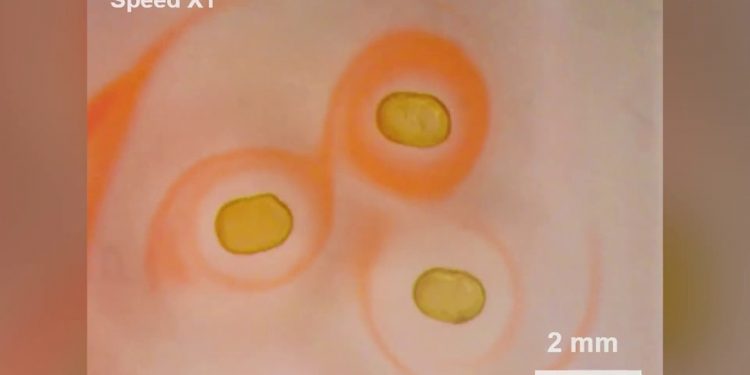Until now exclusively hard and rigid materials can also be soft, thanks to this new technique to produce a kind of “liquid magnets”, flexible magnets have been developed through a few drops of magnetic liquid that could provide us with a revolutionary class in the future of printable liquid devices for a variety of applications.

The finding is detailed in an article published in the journal Science by a team led by materials scientist Thomas Russell of the University of Massachusetts Amherst.
From artificial cells that provide targeted cancer therapies to flexible liquid robots that can change their shape to adapt to their environment, there are many potential applications of this new material, which for its conception iron oxide nanoparticles were used in a special mixture of polymer and oil to transform the paramagnetic ferrofluid into the ferromagnetic state at room temperature. As a result of the interactions of the mixture of nanoparticles and polymers, the resulting drop has magnetic properties similar to solid magnets but with liquid characteristics.
Rusell himself points out that the applications of something like this can be revolutionary. The new reconfigurable ferromagnetic liquid droplets they describe offer more possibilities of this type, such as magnetically actuated liquid robotics, liquid containers to deliver active matter and information technology with programmable liquid drop patterns:
A thousand years ago, European travelers used compasses made of magnetite excavated on Earth to explore and discover new continents. For centuries, people learned to build intelligent magnetic devices to improve the quality of life. Such jumps in science and technology are always followed by the sudden appearance of new material or theory.









